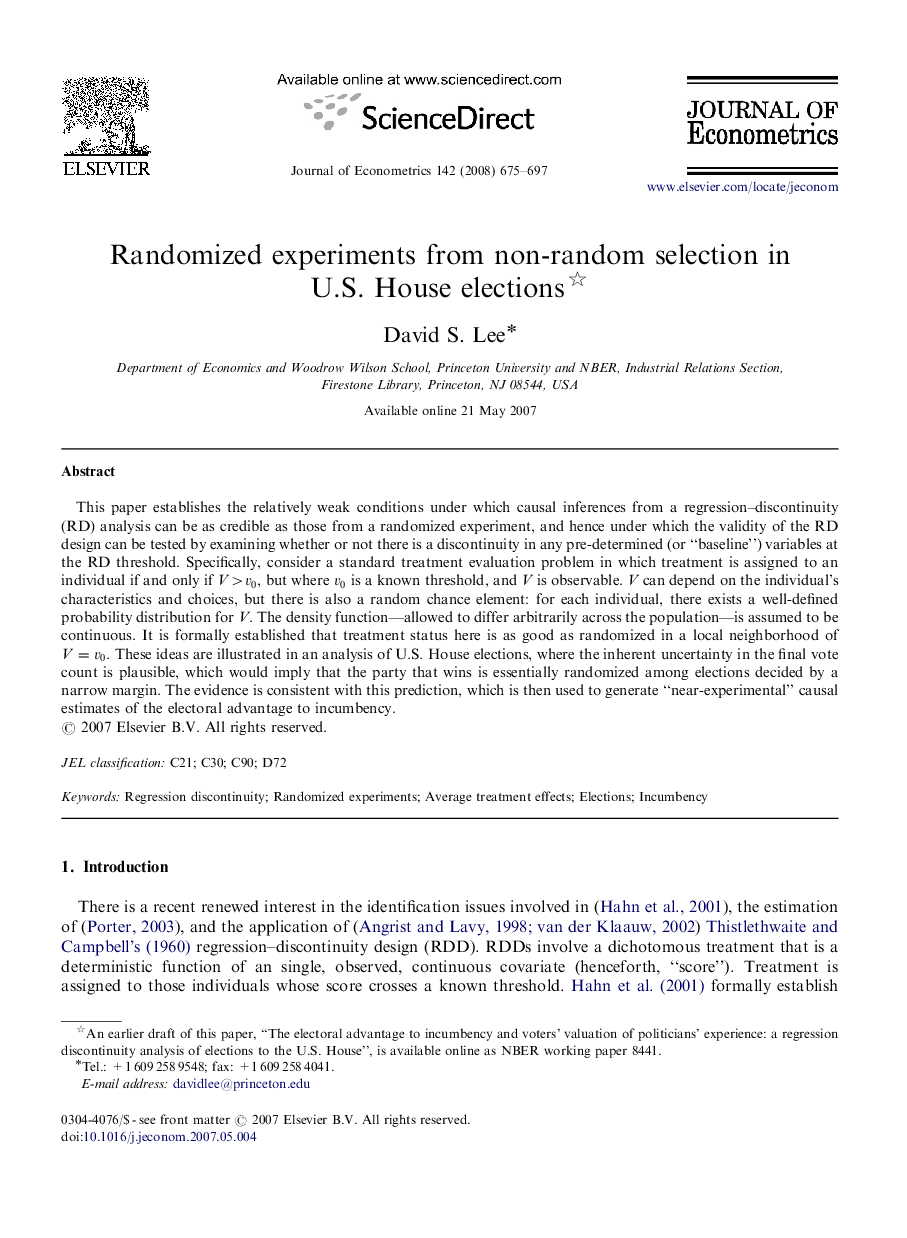| Article ID | Journal | Published Year | Pages | File Type |
|---|---|---|---|---|
| 5097013 | Journal of Econometrics | 2008 | 23 Pages |
Abstract
This paper establishes the relatively weak conditions under which causal inferences from a regression-discontinuity (RD) analysis can be as credible as those from a randomized experiment, and hence under which the validity of the RD design can be tested by examining whether or not there is a discontinuity in any pre-determined (or “baseline”) variables at the RD threshold. Specifically, consider a standard treatment evaluation problem in which treatment is assigned to an individual if and only if V>v0, but where v0 is a known threshold, and V is observable. V can depend on the individual's characteristics and choices, but there is also a random chance element: for each individual, there exists a well-defined probability distribution for V. The density function-allowed to differ arbitrarily across the population-is assumed to be continuous. It is formally established that treatment status here is as good as randomized in a local neighborhood of V=v0. These ideas are illustrated in an analysis of U.S. House elections, where the inherent uncertainty in the final vote count is plausible, which would imply that the party that wins is essentially randomized among elections decided by a narrow margin. The evidence is consistent with this prediction, which is then used to generate “near-experimental” causal estimates of the electoral advantage to incumbency.
Keywords
Related Topics
Physical Sciences and Engineering
Mathematics
Statistics and Probability
Authors
David S. Lee,
